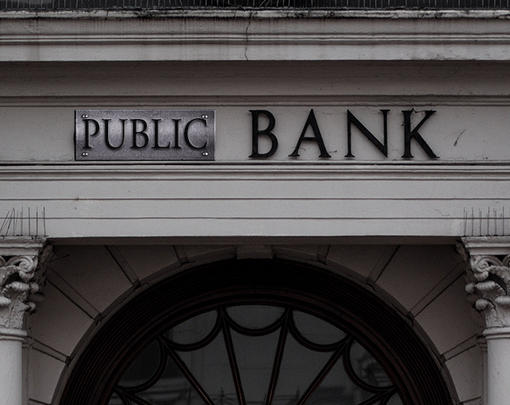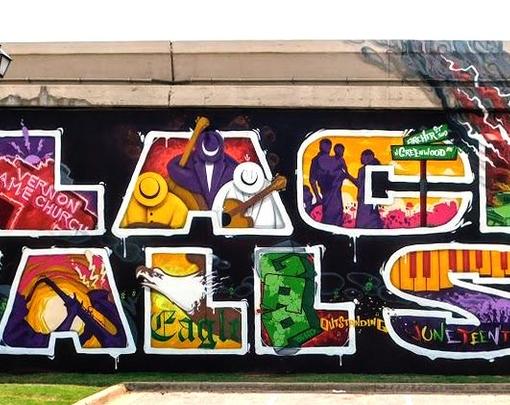One of the most important parts of a program for building power to take on the financial industry must be one of political education. With that in mind, here is a reading list that could be used by organizers to build education events of their own as part of a campaign.
To be clear, this list is not comprehensive by any means and should not be seen as one that adequately addresses the different ways financialization acts as a predatory force on working-class communities of color specifically or the Global South more broadly. Instead, it’s meant as a standalone, compressed tool that can hopefully introduce a complex topic.
So, let’s start at the beginning, with some of the introductory texts you should read to gain a better understanding of the processes of financialization and how they interact with the dynamics of fossil-fueled climate change.
- What Every Environmentalist Needs to Know About Capitalism, by Fred Magdoff and John Bellamy Foster (2011)
Although it’s dated now (published before Naomi Klein’s seminal text This Changes Everything which introduced a much wider audience to the connections between capitalism and climate change, and even published before the international Paris Accord that Trump unceremoniously removed us from), this is still one of the very best introductory books on complex climate/environmental system dynamics and the complex economic balance sheets that were informing the political terrain for negotiations on international climate policy in the mid-2000s and before. So, I recommend reading this as a way to not only get up to speed on acronyms and interlocking diplomatic bodies, but also to see that programmatic solutions for addressing the root of the issues of climate change have been around for years.
Can’t read the whole book? Then pull out Chapter 5, “Can Capitalism Go Green?” and the appendix, which is the full text of the People’s Agreement that came out of a “World People’s Conference on Climate Change and the Rights of Mother Earth” in Cochabamba, Bolivia. Together these pieces will get you grounded in the scary direction of green capitalism, and the demands of a Global South-led movement for climate justice.
- Makers and Takers: The Rise of Finance and the Fall of American Business, by Rana Foroohar.
This is a piece of mainstream analysis that was quite useful to read, despite its overall lack of visionary/transformative policy proposals. Foroohar knows how to build a compelling story, and her critical eye is set on the right targets—a k a the financiers, corporate raiders, and regulators asleep at the wheel.
The one chapter especially worth reading is Chapter 5, “We’re all Bankers Now.” It uses the story of General Electric’s finance department to tell a broader story about the financialization of American firms, a key dynamic that got us where we are today.
- Fictitious Capital, Cédric Durand
This French title is short, but it’s filled to the brim with a material analysis of financial capital (both where it comes from and how it operates in relationship to other elements of the system of capitalist production). It’s not quite a 101-level book, but there were enough pieces of accessible information in here to understand the overall thrust of what Durand is trying to communicate. Additionally, this is one of the two books with a base level definition of financialization that grounds the entire report this reading list is attached to!
Read the whole book, but if you can’t, focus on Chapter 6, “Where do Financial Profits Come From?” In that chapter, Durand breaks down a set of categories to answer his rhetorical question that will immensely help with any necessary work to identify and target financial actors.
Next, you should dig in to some history to inform the economic analysis you’ve been building.
- The Shock Doctrine, by Naomi Klein.
I know, it’s on everyone’s list. But there’s a reason for that! Klein’s history is one of the clearest pieces of writing that ties together the “ideas laying around” with their bloody effects in the real world, which is incredibly important when discussing fictitious capital and its ramifications.
It is a long book, so if your time is limited, read chapters 2-4, which take you from Milton Friedman’s laboratory of ideas in Chicago to ground zero of the coup in Chile and its fallout across Latin America, which helped solidify the economic system we know today as neoliberalism.
- The Alchemists: Three Central Bankers and a World on Fire, Neil Irwin
This, like The Shock Doctrine, is also highly readable; however, it’s also a very partisan narrative that heroizes the central bankers and other institutions at the center of the financial crisis (and the financial system writ large), so approach it with a critical eye.
The reason this book is on the list is because of Chapter 12, “The Battle for the Fed.” Although it’s written from a political perspective I disagree with (Bernie Sanders is written as a grumpy extremist, for context), it was a highly useful behind-the-scenes look at what the struggle around Federal Reserve Chair Ben Bernanke’s reconfirmation and what the larger role of the Fed looked like in 2009-2010 that everyone should read to get a better sense of how the Federal Reserve maintained the power it has today.
- The Green New Deal: Why The Fossil Fuel Civilization Will Collapse by 2028, and the Bold Economic Plan to Save Life On Earth, Jeremy Rifkin
Although many of the programmatic recommendations and overall political framework of this book is questionable, there’s enough useful history in this book that has informed our current political terrain within the national and international climate policy terrain that it’s worth a read. And, now that you’ve hopefully read all the other books in this list, it can serve as a springboard to think critically about what you would put forward as an alternative set of recommendations for harnessing finance in service of climate justice.
Chapter 2 in particular, “Power to The People,” gives a clear history of the Green New Deal’s origins as an EU-based phenomenon. It’s a useful way to remind ourselves that it can take many years for new frameworks and ideas to take hold in the popular imagination.
And now, last but certainly not least, a section of books that you should read to get your brain turning for demands and campaigns to fight for:
- Peoples Republic Of Walmart: How the World’s Biggest Corporations are Laying the Foundation for Socialism, by Leigh Phillips and Michal Rozworski
If you read Rifkin’s Green New Deal book, you might have questions about his ideas around pension fund deployment and “Environmental and Sustainable Governance Investment” and what a more grounded analysis of how to realistically engage these ideas would look like. Luckily, this short book from Jacobin and Verso is packed to the brim with summaries of the various debates around planned economies, and ideas on how to take up these foundational questions despite our entirely different material conditions.
Chapter 5, “Index Funds as Sleeper Agents of Planning,” puts forward very clear ideas about how to harness the power of finance for workers—but it’s also clear about how powerful enemies will fight back against those sorts of campaigns.
- Our Common Wealth: The Return of Public Ownership in the United States, by Thomas M. Hanna.
Public ownership, in this list author’s opinion, is the best horizon for people interested in controlling the actors, institutions, and markets operating in the financial sphere and its spheres within its influence. This book (written by a Democracy Collaborative staff member) not only lays out a comprehensive survey but also a compelling framework for systemic shifts that can reinforce the fight for public ownership across multiple industries in the United States.
Chapter 5, “Toward a framework of public ownership for the 21st century,” is exactly what it says it is! This framework will give you the foundation you need to see what
- A Planet to Win: Why We Need A Green New Deal, by Kate Aronoff/Alyssa Battistoni/Daniel Aldana Cohen/Thea Riofrancos
“All politics are climate politics” is the central tenet of this book that is rapidly becoming a manifesto for many 21st century ecosocialists. It’s short, fun, serious, dares to dream—it’s a perfect book to do a reading group with whatever organization you want to build a campaign to take on the power of fossil-fueled finance with.
Although it’s short enough to read in just two or three sittings, Chapter 4 on “Recharging Internationalism” is probably the most important for this reading list. Not only is there a discussion of existing venues for material international solidarity like the Green Climate Fund, but it also discusses the way that supply and finance chains interact across national borders which is crucial.
- Stolen: How to Save the World from Financialisation, by Grace Blakeley.
Of all the books on this reading list, this is without a doubt the one you should read if you can only read one. Blakeley may be writing from the perspective of someone living in the UK, but her historical lessons and unabashed Marxist economic analysis of what’s wrong with the system is unparalleled. By pairing a totally accessible analysis of what’s wrong with a clear set of programmatic recommendations for her context (which was the upcoming 2019 Labour elections at the time of writing), Blakeley shows how to do informed politics based on whatever current moment the reader finds themself in.
READ THE WHOLE BOOK. NO EXCUSES.
Bonus: Crashed: How a Decade of Financial Crises Changed the World, by Adam Tooze.
This mammoth of a book (700 pages, including the notes) presents a sweeping narrative of the big big picture of financial flows between Europe and the United States as the key nodes of the crises that financial and political crises that shook the world from 2006-2016. A major narrative device that Tooze uses throughout the book is to advance the metanarrative one step at the beginning of a chapter and then spend most of the rest of the chapter identifying the historical trends and various elements of political economy that caused that step forward, so this book is particularly useful when thinking through all the various strands that get compressed into a singular historical narrative.




